UP TO THE MINUTE
Green Roofs, Real Results - PODCAST TRANSCRIPT
June 16, 2025 at 3:00 p.m.Editor's note: The following is the transcript of a live interview with Angie Durhman, technical sales support representative and John Parker, architectural sales representative from SOPREMA . You can read the interview below, listen to the podcast or watch the recording.
Intro: My name is Heidi Ellsworth and this is Coatings Talk from Coatings Coffee Shop. So happy to have you here today. This episode of Coatings Talk is going to be focused on green roofing. And of course when we're talking about green roofing, we're talking about waterproofing. So it is incredibly important to have there. We are so honored to have this sponsored by our friends at SOPREMA and bringing their amazing experts to the table to talk about how you can include green roofing in your business. Really that waterproofing part of it, so critical, so critical and how you can be involved with the whole green roof across the board.
So we are going to get started, but before we do, a few housekeeping. First of all, this is being recorded and will be available within 24 to 48 hours after today's episode. Also, the chat is open, so please let us know who you are, where you're at in the country and the name of your company if you can. We just want to say hi, plus you can ask questions or make comments throughout the entire episode.
Finally, please be sure to share this with other, it will be on demand, so be sure to share this with other roofing professionals, with your company, with your friends and family. This is good stuff that will really help you and your business. So let's get started for today. I am very happy to introduce John Parker from SOPREMA to the show. Welcome, John.
John Parker: Well, thanks Heidi and thanks very much for having us. We are both, Angie and I, long-term green roof aficionados and it sure is great talking with you and all the roofing contractors and related professionals on this podcast. So, thanks for having us.
Heidi J Ellsworth: Thank you. I love green roofing, I love talking about sustainability and you guys really are bringing it today. Let's start with an introduction. If you could introduce yourself, give us a little bit of your history and what you do with SOPREMA.
John Parker: So I've been a landscape architect for 30 years almost and worked on the design side for the first probably 20 years of my career. And then 15 or so years ago, I had the opportunity to join Furbish, which was a kind of pioneer in the green roof business in the mid-Atlantic and joined them as a business development guy, which I guess went okay because two or three years ago, SOPREMA acquired Furbish as part of a strategy that caused some confusion but I think ultimately is great for Furbish and great for SOPREMA.
So I'm currently the Northeast AEC rep, which basically means I get to do my favorite thing which is go around the Northeast talking to architects about green roofs, roofing, waterproofing and anything else they'll let us talk about.
Heidi J Ellsworth: How fun, the perfect job really. That sounds pretty awesome. Yeah.
John Parker: It is.
Heidi J Ellsworth: Thank you so much for being here today and I'm also very honored to welcome Angie Durhman here to the show. Angie, welcome. Can you introduce yourself, tell us a little bit about your history and what you're doing with SOPREMA.
Angie Durhman: Thanks, everyone, for showing up today. My name is Angie Durhman. I have been in the green roof industry for about 25 years. I started out with a horticulture background, looking at plants that can live on rooftops intentionally, how they compete with each other, how they can diversify over time, also how you maintain green roofs. And I took that knowledge to the contractor world working with roofing contractors, waterproofers and landscapers on how to install and maintain green roofs.
With the last 15, 20 years, I've also been working with building owners on their existing green roofs and restoring failed green roofs as well. Obviously because I'm very focused in on the green roof, green roof design, I too work with a lot of architects and landscape architects. Going into the offices, getting to the plans, trying to figure out what will work, what won't work, trying to make sure that we're always staying within budget because nothing is worse than having a green roof that we've spent so much time on just to get it value engineered or just simplified to the point where there's barely any green roofing.
So one of my goals in life is to put more green roofs on every building that I can see. When I go in an airplane, the first thing I do is look at all that rooftop space that I could just green up. And then also in the major cities too, looking down at high rises, there's so many opportunities that I see. So, any way that I can help out to get green roofs across the country is what I'm here to do.
Yeah, I was going to say for SOPREMA, I am the technical sales rep, so anything coming through with green roofing, helping out the sales technicians, helping out the technicians in the field as well, so making sure we're getting the right products and we're getting the right overburden installed and then maintained. So I also work with John on a lot of the architectural sales, so we basically work in tangent. He takes care of the Northeast, I can deal a lot with the Midwest and the West Coast.
Heidi J Ellsworth: And I love your comment about looking down out of the airplane at the roofs, how many of them could be green and every hotel that all roofing professionals go into. You're looking down and going, "What's going on with that roof? What could they be doing?" In fact, John, I think you are looking down at green roofs right now, right?
John Parker: I am. I'm in a client's office in Newark, New Jersey and they very gallantly lent me their conference rooms so I could join this call and there are two different green roofs directly outside the window on the other side of the street.
And just to reinforce what Angie says, I found watching TV and movies with the advent of all this drone footage, there are a lot of shows that are showing aerial views of cities. And I mean I'm not ashamed to admit, mostly I'm looking at it going, "Oh, you could put a green roof there, you could put a green roof there." So I think it's suffice to say Angie and I are big fans of green roofs and we're literally able to talk about them for days on end.
Heidi J Ellsworth: I love it. I love it. Angie, well, thank you. You've said exactly what everybody, every roofing person out there is thinking as they look out those windows. So let's get some more green roofs, at least that's what I always think. I love it.
Angie Durhman: Yes.
Heidi J Ellsworth: So for everybody out there, as I said, the chat is open. So please say hello, let us know where you're from, what you do. And be sure to ask questions all the way through or make comments. I saw a few little hearts coming through. Thank you. We love that stuff. Let's make this a conversation as always.
So let's get started and what we're going to really want to talk about upfront is understanding vegetated roofing because I think sometimes, we don't always understand everything that has to do with this. So Angie, can you start us out with really what it is, what's vegetative roofing and what should contractors really be aware of?
Angie Durhman: Sure. So when we think of green roofing, obviously in our world, we're thinking of living rooftops. We also have different terms across the country, green roofing, vegetated, vegetative, eco roofs, urban agricultural rooftops, garden roofs, all of those types of opportunities with the different categories and types are just some of the topics that we're basically talking about putting plants on the rooftop.
From that, we have different categories which basically simplify or make it very complex, the different types of green roofing that we're talking about. Extensive green roofing is our most common. It is the thinnest profile system with the lowest amount of maintenance. Typically, we don't even need to have permanent irrigation. We really want those plants to be self-reliant and over time that they will change over in terms of their ecosystem. But really, we're talking about the most basic lightweight systems.
The semi-intensive green roofs often add a bit of a height of growing media. So it's not just having three or four inches of growing media like the extensive, but now we have a semi-intensive where we have up to maybe eight inches or even 10 inches of growing media. Now we can diversify a lot more with the plant material, herbaceous material, grasses, other flowering plants and still pretty low maintenance.
The intensive green roofs are going to be those fun amenity decks where we've got plaza pavers. We have possibly a shade area, maybe a sitting area, some various vegetation of varying heights. When we have something like this, a lot of times it's used for the occupants of the building to go up and enjoy that space. Having either the office space or apartment complexes, condos, urban living, institutional facilities like hospitals also find that to be a very good intensive green roof use of their rooftop space. And then we also have permanent irrigation and with that it's going to come the higher cost of maintenance.
And then lastly, another concept that we have created over the course of many years is a modular system within our industry. And our modular systems are basically taking the plant material concept away from any contractor, saying, "Here's a basic green roof system. It's already pre-planted. All you have to do is move it through the building up to the roof and you can put it down on the actual roof deck itself."
So modular systems typically come in a one by two, two by two. Sometimes, I've seen them as much as four by four. But if you're thinking of a four-foot by four-foot tray, that's very heavy. And so those tend to not be very popular in the marketplace. But modular systems do fit a need and we'll be talking about that throughout the course of today.
Heidi J Ellsworth: We already have a question that I think actually goes right with this slide from Lily, who I love Lily. Thank you so much for being here. But she says, when, why would you use a liquid applied roofing membrane under a vegetative roof? Why does it make sense to use LAR with vegetation and would you suggest a different kind of membrane instead? So I'm not sure we're going to get into that later on, so do you want to take that now?
Angie Durhman: Well, I think maybe can we just table that for now? Because we probably will talk about that and we'll get into more of the waterproofing, the structural deck types, all those types of things. So this was basically just the introduction slide as to the different concepts of green roofing and the different designs that we can incorporate. So we'll keep on approaching it and if we somehow miss it towards the end, we can approach it then.
Heidi J Ellsworth: We've got it right there. And we have another one that I'm holding off till later too, so keep those questions coming. Don't worry, we're going to get through them all.
Angie Durhman: All right.
Heidi J Ellsworth: Perfect. Okay, so looking at this really then is the benefits of green roofing and how everything you just said, Angie, as you went through that. John, can you talk about what are the benefits of green roofing?
John Parker: Oh, sure. I hope we've all got plenty of time. Fundamentally, certainly in the Northeast, there are few places that mandate green roofs, but they will say you need to comply with these stormwater regulations. In Washington DC for instance, any new building project needs to manage the first 1.2 inches of rainfall. And not only manage them, they need to retain them on the site. And so just that one requirement essentially means you need to do that if you want a building permit.
And even though green roofs are very expensive relative to other ways to manage stormwater, for instance, a pond you might see at the low point of a Walmart parking lot, that's a much cheaper way to treat stormwater than on a roof. But the more dense the environment and the more expensive the real estate, the more value that green roofs can provide because we're essentially doing something where we weren't doing anything before.
Fundamentally, a roof is keeping the building dry, number one goal, still has to do that whether you've got a green roof or not. Angie and I are certainly of an opinion that really it's our job to make sure we're doing more than one thing on a roof just to try to reduce the cost in a sense because not only is it just keeping the rain out, it's also an amenity space. It's also a green roof area, which as the slide shows maybe it helps with habitat creation. Maybe it reduces or not maybe, it does. I mean scientifically, we know that the green roof is a lot cooler than a normal roof membrane.
So there are dozens of different things that green roofs can do. And obviously given our audience are roofing contractors, one of them may not be that appealing because we're saying that a green roof is going to extend the roof membrane. We all know that the things that make a roof membrane fail, the hot and cold, freeze-thaw that's putting tension on that membrane. And then of course, the UV damage from the sun beating down on it every day.
And so that's why roofs last 15, maybe 20, maybe 30 years if they're in some sort of protected assembly. But eventually, you're going to need a new roof. And this industry is not old enough here in the US for us to know how many times you can avoid replacing a roof if you have a green roof. We certainly know from Europe that it's not unusual to expect between two to five times the longevity of the roof. So if he had a roof that was only going to last 10 years, you put a green roof on it, it may last 50 years.
Now in terms of everything but fundamentally sustainability, the effort and the cost and the carbon footprint of the roof membrane is whatever it is. The way to reduce it is to make it last longer. And so I think probably, green roofs of all the other benefits that we could go into, biophilia, literally humans are drawn to nature and if you look out of your hotel room and you see a black EPDM roof with kind of stains on it, that is not making you feel good. You look out of your hotel room onto the same roof but it's got a green roof, chances are you're going to feel pretty warm and fuzzy inside.
So I think the biophilic value is somewhat overlooked. But I think the real thing that green roofs do in more and more places now is allow you to go and get a building permit, allow you to build your building and then make money on the building that you invested in.
Heidi J Ellsworth: That green roof brings so many different benefits. I mean even like this last point, energy efficiency, that is really, it starts paying off for itself whether that's because the people want to be in the building, they have experience with the green roofs, all of the different things, stormwater management. I mean, there's just so many different benefits that can really help the ROI on that roof.
John Parker: A hundred percent. And just we need to be honest about green roofs. They cost a lot of money, not only to build them but also to maintain them and they have to have all these benefits for them to even be on the playing field.
Heidi J Ellsworth: Yeah, yeah, so true. So we do have a question that kind of goes exactly with what you were saying earlier, John. And it says, great to see you guys and this is from Dick Bernauer, so thank you.
John Parker: Hey Dick.
Heidi J Ellsworth: Hey. Some cities have a green roof mandate, but even more cities in the US do not yet. What do you think is keeping cities from adopting this nature-based stormwater solution?
John Parker: It's a really good question and I think probably goes back to my point about the more urban location is and the higher the real estate value, the less people will push back. No one really likes being told what to do. So I think local governments are a little bit anxious about saying you have to build a green roof if you want a building permit.
And a few of them have tried, but often like in Denver, as Dick knows, it was called the green roof mandate but they also said, "Hey, you can do solar panels if you want. We'll count them the same as a green roof." And it's like, look, that's fine, but even that mandate was only for a quarter of the roof or something like that.
So to answer the question is I don't really know. But when you look at somewhere like Germany, which has maybe a hundred times more green roof than we do here, they're less worried about it. They said, yeah, you can either put a green roof on your building or we're going to charge you 50 euros a square meter a month for stormwater management.
And so very quickly, people did the math and said, "Oh, we're going to put a green roof on our building." And there, I mean it's pretty much unheard of to have buildings without green roofs certainly for new construction.
Angie Durhman: If I could just add to, go ahead.
Heidi J Ellsworth: Yes, go ahead.
Angie Durhman: I was going to say, I think the existing policies across the country right now were somewhat based on those advocates within the policy realm that were looking at stormwater, looking at the calculations for their specific climate where they were with the urban infrastructure and really started to do the calculations and said, "You know what? This dollar per dollar, we should be incentivizing green roofing."
And maybe it starts out as an incentive and then pretty soon it escalates into more of a mandate. And then pretty soon, it's just like that's just what the designers know. Like in Milwaukee, they have to do a certain percent of their impervious area that they have to do green roofing and other green infrastructure needs.
So I think that historically, it has been from mandates or just advocates within the local policy, but then also it catches on. And if it doesn't catch on, then perhaps there's a tax structure sort of associated to it or a credit at the end of the year for being able to manage your stormwater. So that's just to add to what John has been saying on that.
Heidi J Ellsworth: No, I think that's a great point too and it saves the city. It's what the city... I mean if we look back on the flooding of Houston, we know that that stormwater needs to be controlled and so it pays for the cities to actually put things in place, that it's going to save them tons of money down the road from natural disasters or whatever else may be happening, pollution.
And I think it really kind of leads into, Angie, what you're saying and also John, is that it's really about our environment. And as climate change becomes more and more obvious and we have a lot more people, especially our next generation and Europe, to your point, John, who are really focused on that more, Angie, can you talk a little bit about green roofs and how it is benefiting the environment?
Angie Durhman: For sure. There are so many benefits. When you put vegetation in an area, it automatically reduces the urban heat island effect anywhere from 3 to 10 degrees. By walking through a park with tree canopy and even turfgrass and other garden areas, you're going to have a more pleasant experience walking through that space. And then all of a sudden when you're out of that garden and you're back into the concrete jungle of Washington DC and you've got all these buildings coming at you left and right, automatically you're feeling 10 degrees warmer if not 15 degrees.
And I personally would rather be walking through those greened areas instead of under just the impervious areas. Granted, there's a place for those, but having that combination of the green elements with the impervious is a very nice, basically a benefit of having the reduced urban heat island effect.
Another thing would be just biodiversity. When you increase the plant material, then you have increased the amount of habitat. You might be designing for a specific type of bird or pollinator of some sort or butterfly or creating a habitat on the roof that has some abandoned logs or rocks that might be very interesting for certain animal, those are the types of things to improve the ecosystem habitats for green roofing and for the diversity of the urban environment too.
Heidi J Ellsworth: Wow. And we already talked a lot about stormwater management, but when you put that together with the living gardens, talk a little bit, what's this doing to help our environment?
Angie Durhman: We're saving somewhere between 70 to 90% of those rain events and we're saving them on the rooftops or in the pervious garden areas around the buildings that we're building. When we get to save and retain that, retain or detain, then we're able to allow that existing stormwater infrastructure, all those existing pipes that were built 80, 90 years ago, now with all that additional impervious surface above that, now that stormwater system is able to manage the additional water, those rainfall events from the rain falling onto the rooftops, parking lots, all that water rushing to the streets and into the sewers. Now the sewers can handle it a little bit better because there's a little bit less water moving into that system.
We could also discuss blue roofing where basically we're capturing water on the roof for a period of time, detaining it and then letting it go some point after that rain event where we know that stormwater system can handle that water coming through the system at that point. And if it's not treated, a lot of times, if it has too much water in that combined sewage overflow or sewer system that's currently designed in an urban environment, it might be left untreated which means untreated water, pollutants going right back into the watersheds. And that's what we're really trying to avoid.
Heidi J Ellsworth: Wow. And a lot of this has to do with regionality too, right Angie? Because I mean when you think about it, you're going to have certain areas that don't get as much rain, but I'm even thinking of the Southern states where there's monsoon. And so having these green roofs really can make it whether you're in the desert or you're up in Oregon or the Northeast.
Angie Durhman: One thing I think that we will have to admit to with green roofing is that we can help retain and detain storm waters to a certain event. But once that green roof becomes saturated at the total level from the plant material, growing media, the retention and detention products that we have in place and then whatever else we might be using on that rooftop to hold, it can only handle so much. So the monsoons or the immediate mass flooding that might be happening, we can retain that to a certain degree. But once that green roof is saturated, kind of its met its match.
So we are trying to alleviate typically like 90% of the rain events that happen in an urban environment. Those are what we're capturing. The extreme events are still things that we're trying to work through and I think John could agree that that's where we kind of fall a little bit short with green roofing. But with pervious surface in general, we have our limits with that.
John Parker: Yeah, I mean, Angie, you make a good point. But I mean if it rains enough, even a forest is going to become flooded, right?
Angie Durhman: Exactly.
John Parker: Forest has got a massive amount of capacity for water, but eventually it's going to get saturated. And yes, we could say, "Well, if we put three feet of soil or green roof media on every new building, we'd be able to treat 95% of all events," whatever it is. I think where we are and Angie and I may disagree a little on this, is it's definitely not a silver bullet. It's one of dozens of strategies we need to adopt across the country, maybe the world.
But in terms of green roofing, yeah, if 90% of the rain events basically happen and we don't have to use the municipal sewage system or storm drains so they're not getting worn out, that's maybe as much as we can realistically expect just because everything has a limit and it's a question of where's the most value.
Heidi J Ellsworth: But in all honesty, the more green roofs, the more capacity. So it does start helping itself as it goes. Okay, so with that in mind, John, when we're looking at what Soprema is doing and some of the solutions there, let's talk a little bit about the Toundra Box.
John Parker: Sure. So this is Soprema along with other manufacturers, has essentially taken the idea of the green roof and said, how is it viable for us to keep the price down on green roofs and drive adoption beyond whatever the stormwater code or building code or LEED requirements or passive house or whatever it is? What can we do as a manufacturer to help drive green roofing? And a green roof module or pre-vegetated tray, there are a lot of different terms for it, the whole idea is you can imagine it's basically like a living, let's say, concrete paver. Someone's got to get it up on the roof and someone's got to lay it out in the right place according to the design drawings.
But essentially, that is a little box of green roof. And if you put a bunch of them next to each other, you eventually end up with a decent size green roof. And if you put tens of thousands of them together, you eventually end up with a really decent green roof. You can see in the picture that the little white band that is essentially wrapped around the top, part of that is in order to make transport easy so that we can stack them on top of each other and the trays aren't squashing the plants underneath them.
And then when you get them onto a roof, you can imagine you lay them all out and then you kind of pinch those little walls, which we call a belt sometimes and lift them up. And now basically the whole idea of a module has gone and it just looks like a contiguous built-in-place green roof.
The other thing is, of course, if you have a building that's, let's say occupied, a hotel for instance and some consultants persuaded the hotel operator that all these rooms looking down over that ballroom, you could probably charge an extra 20 bucks a night if they had a better view than that dingy old roof membrane. Why didn't you let us put green roof up there and now you can charge more money for those rooms that have this great view? That might not be a huge area, but it may have a huge impact.
And if you don't have to close down, I don't know, Pennsylvania Avenue and Washington DC and work on a Saturday to set up a crane and a blower truck to build that green roof, but you can actually deliver to the loading dock on trolleys and you can load it up and go in the service elevator, take it up to the roof and basically build a green roof as though it was made out of pavers or something else, there's enormous amount of value.
And of course, the other thing is we as a roofing manufacturer, obviously our customers and our clients are roofers. And if there's a $10 roof project, $10 a square foot roof project can be turned into a $30 a square foot green roof and roof project, surely our customers might enjoy the opportunity to make more money on the same project.
A lot of roofers will say, "Don't ask me to do anything with living things. I work with asphalt, I work with torches, I work with advanced chemistries. I'm not a living thing guy," I think that the Toundra Box and other modular systems really address that because roofers are very skilled at moving material around safely, putting it in the right place at the right time.
And I think broadly, the belief is this is a good solution in plenty of cases. It's not a universal solution, I don't think and there are some projects where you might say that's not the right way to go. But for a lot of projects, this just opens the door to possibly installing a few hundred square feet of green roof or a couple of thousand square feet. And like you said earlier, Heidi, it's not just how much is this particular green roof doing, but how much are all those little green roofs doing kind of working in unison.
Heidi J Ellsworth: To really solve a problem, not only with heat island, stormwater, all of those kinds of things as they come in. And I love the boxes because that does make sense. It's like putting pavers down and it makes sense to them. But I do have a question, Angie and that is how do you maintain it? What is the long-term maintenance? Because we know our roofing contractors out there have great service and maintenance programs that they are taking care of their building owners, how does that work into that?
Angie Durhman: That's a great question. I'm glad we're talking about maintenance. As I started with my introduction, that's one of the things I'm most passionate about is maintaining these huge investments that the building owners have put into their facilities.
I think of it in two separate ways. One of them is a short-term maintenance, which is basically when the green roof first gets installed, gets planted, gets settled in, we're talking about the first six months to maybe a year. So we're going to want to make sure that there's going to be inspections and regular maintenance going up every four to six weeks for the most part, in the most parts of the growing in the country during the growing season.
Now there might be times where they're dormant. If they're dormant, that's great. You don't even need to do anything. By the time they start coming out of dormancy in the spring like you would see with the tree canopy surrounding the area, once those spring buds start coming up with the trees, you can expect that the green roof is starting to come out of dormancy as well. So that's when you want to start thinking about maintenance and getting on that regular schedule.
We do talk about seasonal care for both short-term and long-term maintenance. It is great to have a steward who understands that rooftop, that understands certain weed pressure and certain cycles that there's going to be additional weeds. We all kind of know when dandelions are going to be popping out, the same thing might be happening on the rooftop.
We might have periods of drought. Well, let's think about what kind of weeds really love a drought condition that they have the harshest climate possible. Well, for one that's sedum plants and sedum is the plants that we are intentionally growing up on these green roofs, a lot of the extensive roofs. Also, we have some weed competition like spurge who also have little, they're little weed seeds that just live in the sidewalk cracks. So when you're walking around and you're touching these weeds that are growing in sidewalk cracks, that's almost the environment that we are mimicking up on that rooftop.
So those are the things that we're walking on, doing regular weed walks. The importance of understanding who your client is, being friends with the security guard, letting you up to access to that rooftop, giving you benefit or having the building owner understand that you need to have the maintenance happening and that is going to fall into the operational budget.
A lot of times when we're working with architects, we're thinking of the actual capital budget. What are we going to do? How much is it going to cost initially? We're turning these building owners or buildings over to owners who are going to have the operational costs as the long term. So we want to make that they are stewards of their green roofing as well.
We do have areas across the country and in Canada and other places where there's regulations. And partially, green roofs have to comply with certain square footage initially, but then they also have to deal with the fact that the green roofs must be healthy and maintain a certain coverage, maybe 80, 90, 95% depending on the municipality that you're working within or their guidelines.
So we want to make sure that the contractor is making sure that every time there's a crew going up there, it's being documented. And then those documentations are then being turned into the inspection office or maybe the inspector is coming out once a year or once every three years. We don't really know for sure what their timeline is, but they have the access to get up to that roof to make sure that everything is growing the way they should be growing.
One of the thing too is that when we're looking at the maintenance, we want to have the plants in one particular area and not in other areas. So when we are doing a transition between the vegetated areas and the non-vegetated areas, this photo is a great picture here that shows the white areas around the perimeter of each of those green roof areas. Those are either pavers or gravel ballast. Those are intended to not be planted and those are the areas that we want to make sure are plant free, weed free and that they steer clear as clean as possible year round.
And with that, with all of the discussion of warranties and maintenance and making sure you're documenting the green roof visits and inspections, as long as you are maintaining that paperwork, the warranty should be upheld. A lot of times, manufacturers for the waterproofing system or even just the green roof overburden warranty will be void if there isn't some regular maintenance on that green roof.
If there's ever a problem and you are showing that there's an issue between six weeks ago when you were out there and the next time you're out, all of a sudden there's a huge problem with a corner. Let's say there's a wind erosion in a certain corner. That happens. We're on rooftops. It's likely going to happen. If there is a wind event or there's new HVACs that come in or some other equipment that we didn't know about that all of a sudden just exists there, that might be causing some of the vegetation to erode away or just die off. So those are the things that we want to make sure we're staying on top of year after year.
Heidi J Ellsworth: Getting in front of it, that's the key.
Angie Durhman: Absolutely.
Heidi J Ellsworth: Yeah, don't let it get ahead of you.
Angie Durhman: Yep.
Heidi J Ellsworth: Okay, so...
Angie Durhman: There are some rooftops I've been on that have strawberries. So during the growing season and there's strawberries, I'll go harvest some strawberries. That's a little benefit or maybe chives or something. And those are very low maintenance plants, but they're on green roofs. Your contractor is up there picking up herbs.
Heidi J Ellsworth: We do see rooftops with restaurants, rooftop gardens. Yeah, John, we kind of know, we've got the systems, we know the why, we know the where. Now you're sitting here and you're talking to your customers right there. You're talking either to architects or you're talking to building owners specifically. What are some of the items that a green roof can help them for meeting their sustainability goals? We know we have a lot of large corporations and building property management groups that have sustainability goals.
John Parker: Yeah, I think and we touched on this a little while ago, but the idea of just making your roof last longer is really one that is kind of easy to understand. And we all know that the sun damages roof membranes. We all know that the temperature fluctuations damage roof membranes. And there's enough science now, like I said, from Europe mainly, although Australia also has done some quite good research on the impacts of green roofs. The fact is if we can spread out that carbon involved in the roof for two or three or four times longer than without a green roof, then that's just a huge improvement.
But in terms of other ways that a green roof can help really depends on what you're looking for. LEED, passive house, we just finished a project in DC that was a multifamily passive house. And although the green roof didn't explicitly count on the checklist for passive house, it's all to do with building a tight envelope and then managing the energy use in the building. And so the design team were able to demonstrate that green roof depth, which I think was six inches, was really going to stop a lot of the temperature fluctuations that might then impact the HVAC systems.
And of course, having a roof that's essentially the same temperature as air temperature, which a green roof is usually within a degree or two of the air temperature as opposed to an ordinary roof without a green roof where you can be 60 degrees above the air temperature. Now of course, if you've got HVAC units on the roof and they're trying to condition air that's 70 degrees warmer than air temperature, those machines have to do a ton more work just to get the air down to a temperature that it could be.
So the sustainability part of green roofs, of course, is enormous really. But again, it's not a silver bullet. We can't say, "Hey, we put a green roof on our building. We don't have to worry about anything else." It's one of the multitude of things that architects, consultants, building owners, all the design side they have at their disposal in order to meet whatever it is, whether it's LEED, whether it's the building code, the energy code, local regulations, corporate objectives.
Plenty of corporations say, we want to decarbonize, we want to reduce our carbon footprint, we want to do this and that. And there's just no doubt that green roofs can help with all of it. They're not going to basically, like I said, take care of everything, but they're an important part of broad sustainability goals. And if nothing else, it's a very visual representation that you take it seriously. Anyone-
Heidi J Ellsworth: And a lot of times, that's just as important.
John Parker: A hundred percent, because it really lays out kind of who you are and what you want to do in a way that no one can really argue with.
Heidi J Ellsworth: Exactly. So cool. So okay, let's talk and I think this is going to take us back to our question we had at the beginning, Angie, but let's talk about design considerations with green roofs, although we may go to the next one, which is waterproofing. So somewhere in here, Lily, we're going to answer your question. So Angie, can you take us on really looking at those design considerations?
Angie Durhman: Sure. I'm not quite sure if my internet was messing up or not, but... So yes, Heidi, we were mentioning at the beginning that we'll likely get into this. So when we are looking at green roof design, when we're talking to architects or building owner with a restoration of a green roof, the first thing we want to look at is the structural load and the structural deck type. The structural load basically means that we are working with a structural engineer. They're either on the team or they are looking at the interior of the building that exists already to determine what that dead load capacity is.
Now, a dead load is going to be the permanent structure that we are adding on that load or excuse me on that deck. A live load is something like people walking around or possibly moving equipment around, but those are considered live loads. What we're thinking of with a dead load is basically that structure that is going to be added to the deck permanently, growing media, handrails, all those types of things that are permanent.
We also are going to look at the type, so if we're looking at a concrete deck or a steel deck, some cases it's even a wood deck. What are going to be the waterproofing compatibilities for each of those? Many times on a concrete deck, a hot rubberized asphalt system was a great system to use. It is something that would be put down directly onto the deck itself. That is a waterproofing layer, but that waterproofing needs to be protected. So then we would be adding in our necessary protection fabrics and also insulation, especially XPS insulation, something that can handle the elements, that can handle the rain, that can handle some of the sun.
But again, now we're bringing insulation on top of the waterproofing, we have to ballast that down. Whether we're ballasting it with gravel, pavers or heck why not just do a green roof at that point, you're already in that cost per square foot. So a lot of times, a concrete deck IRMA system with a hot rubberized asphalt with the overburden on top makes a lot of sense.
Steel decks, something is a little different with those. With the steel decks, we oftentimes will have the insulation directly onto the deck itself, mechanically fastened and then we waterproof/roof on top of the insulation. From there, that deck is now water tight and now we can add the green roofing. And again, now we've created a waterproofing system because now we're covering up that roof deck itself.
Whether that is going to be a PVC or some other single ply or PMMA, it could be various number of things that are out in the industry with some of them have better benefits than others, some of them are not the best ones to use. But in general, those are the types of decking compatibilities with the types of waterproofing that we typically see with the green roofing.
Also, when we're thinking about the design of the green roof, we're looking at shading conditions. Do we have an elevator? Do we have this constant change of sunlight to shading happening? Because of the sun factor, is there going to be an area where there's usually water holding capacity within parts of the green roof system? Is there a low-lying deck area where there's might be some ponding water? We don't want to hear that word, but in reality, that is part of what we do see on some of these decks.
Also, HVAC equipment or mechanical equipment that has water condensation running off of it. Can those plants utilize that water especially in the middle of summer or is it something where it's kind of a pollutant and not necessarily the best plant? Maybe in some of those cases, we're not going to be harvesting for food production or taking the herbs and using them in the garden, but at least then we are aware of all of these rooftop conditions that we are considering.
When we are then looking into those considerations, which we could go on and on about just all the questions I always have when we first start talking about a green roof, then we start to make those recommendations. Can we do a garden that's like something that you would think about in your backyard? Maybe it's planter boxes or something more elaborate or are we doing like a low maintenance and you just want something basic?
You're bringing people up there? Even though it might not be the intention to bring people up there, when the word green roof happens, people are saying, "Oh, I want to get up there." Well, now you have to make sure that you are designing for ADA compliance possibly and if nothing else, fall protection. And if it's in a really tight space, maybe you're just offsetting that green roof away from the perimeter of the roof, 8 to 10 feet if not more or you have that handrail system set up so that it's not going to be an issue in the future.
And again, going into the new construction retrofit like I mentioned at the beginning of this slide, what are we talking about? Are we trying to design within something that already exists? Totally great. We don't need to take down buildings just to build them up just so that they can support the structure. Maybe we can take an existing building that is very limited with the amount of structural capacity. What can we design for 20 pounds per square foot dead load? Maybe if new construction, yeah, let's throw on that concrete deck. Let's put on 200 pounds dead load or whatever.
One of the neat things is with some of these old government buildings built in the '30s, '40s, they are all, most of them concrete decks on that top level. That means it is an architect's dream to go up there and green the heck out of that because a lot of times, they were designed to add an extra story or two stories on top of that building. They never built it, but now we still have this structural load. So now we can look at waterproofing that concrete deck and then doing whatever we'd like to do on the top of that.
Heidi J Ellsworth: That's cool. That's cool. There's so many different options and so many different ways.
Angie Durhman: Yeah, exactly.
Heidi J Ellsworth: I know. Okay, John, let's go through the waterproofing and drainage on the roof and then I'm going to go back after we finish this, I'm going to go back to Lily's question just to make sure we answered all her questions. So talk to us a little bit about waterproofing and drainage. Yeah.
John Parker: So fundamentally, a green roof is built on a structure. If you put green roof plants and green roof media on the ground next to the building, it's not a green roof because it's sitting at grade. So the foundation of every green roof is a roofing system or waterproofing system. And we can have long discussions about the hydrostatic pressure that exists under a green roof, la, la, la. And I don't want to get hung up on, is it roofing or waterproofing?
We've basically built green roofs on single ply membranes, on cold liquid applied, on PMMA, on hot rubberized asphalt in a protected assembly, on SBS modified. Ultimately, we would say we just need the appropriate roofing system or waterproofing system to go with the green roof. In the same way a Honda Civic might be a perfect car for you to commute to work and back, but if you need to tow your 30-foot fishing boat down to the dock every weekend, Honda Civic is not really going to do the job. You may need to look into a Suburban.
So it's the same thing with roofing. We can't say, "Well, this is a perfectly normal project with a green roof on it. Let's just use EPDM." And I'm not saying you can't use EPDM under a green roof, what I'm saying is let's make sure everything is in balance, right? If it's a hospital, for instance, with a million dollar laser facility that treats desperately ill kids, you definitely don't want that room leaking.
So you would say it's worth spending more money on the roof over that billion dollar piece of equipment than it is protecting distribution center for masonry building components. If that leaks, yeah, it's not great, but in 10 minutes a forklift can move the pallets out the way and nothing really gets damaged. If you have to shut down the hospital wing because the roof is leaking, that's a problem all the way around.
So we always just want to say, let's choose the appropriate roofing system for the project. And then part of that equation is, is there a green roof there? Are we going to have hundreds of people up there at cocktail parties every Friday night? If that's the case, that's a different level of abuse, let's say, than if it's just a quiet roof, no public access, hardly any mechanical equipment. It's just different.
So that's point number one that we always try to make to architects. So let's just think about it broadly before we just decide blindly, "Oh, we always specify TPO, so we're doing TPO on here." That's fine, TPO is perfectly reasonable product. But are we sure it's going to be the right one for this thing? So that's my big picture.
And then the thing I'd say about drainage is that as far as I understand it, the building code says you don't change the rooftop design based on whether you have a green roof or not. You have to design the roof deck as though there is no green roof, because a green roof isn't physically part of the structure, it just literally sits on top. There's no way to know 30 years from now, someone might say, "Oh, what about if we did this on the roof instead," and everyone says, "Oh, get rid of green roofs. We want to do this," whatever it is. So the roof has to be designed as it would be if there was no green roof. Just those two things, always keep in mind.
And then the green roof, as we've talked about multiple times, is fundamentally a stormwater management tool. And so if you had a low slope roof without a green roof on it, basically the water when it rains is just going to drift over the roof down to the low point, which hopefully is the drain. When you have a green roof, it's like putting a big wet blanket on the roof.
Now, water is basically being held where it landed and then over time, that water will go down the gravity through the media onto some sort of drainage layer and then go to the roof. But it does mean that even tiny little breaches in the membrane are much more likely to show a leak if they're underneath the green roof just because there's so much more water being held over that breach.
But I mean all the different components, drain boards, drain layers, retention layers, detention layers, media blends, plants, all of that, it all comes down to what are we trying to achieve, where are we in the country? What works in Florida may not work in Arizona and that may not work in Maine and that may not work in Seattle. So we just have to think of it more as a kind of what are we trying to do? The list of components is not desperately long. There's four or five layers that need to go in for the most part.
Heidi J Ellsworth: So John, I want to make sure that we do, because getting really close at the end, so I want to make sure, I think we've answered this. When, why would you use a liquid applied roofing membrane under a vegetative roof? Why does it make sense to use liquid applied roofing with vegetation and would you suggest a different kind of membrane instead? So what's your recommendation?
John Parker: So the recommendation is, number one, we really want a resilient roof. We don't want something that can be damaged very easily. We just want something kind of robust and tough, which usually means a thicker membrane. And then the other thing we want is redundancy, meaning if one layer of the roof gets a little hole in it for whatever reason, we don't want that to be the end of the world. What we'd love is for there to be another layer under it.
So in terms of liquid applied, those are essentially roofs being built on the roof in place. And we're relying on skilled roofing contractors to install things at the right depth, using the right tools, with the right relative humidity and all of that to make sure things cure it properly. But ultimately, what you end up with is a unified membrane without any seams, basically just one big membrane.
If we made the rules and I think Angie would agree, we'd say a protected membrane liquid applied with six to eight inches of insulation between the roof membrane and the green roof, that's heaven for us.
Heidi J Ellsworth: I love it. I love it. And we have, Soprema has all kinds of resources. We have very limited time now, but I do want to just say, check out the training requirements, understanding vegetation needs and coordinating with roofing and landscaping. These two folks, John and Angie, plus all the folks at Soprema can really answer those questions.
And so as you're looking at where to get started real quick, there is so much here where you can get information on Toundra Box, on technical support. But there is an app and real quick, Angie, talk about the app. How people can get on there and find information really easy?
Angie Durhman: You can go onto your phone and look for your play store or whatever you're looking at, however you get your apps. It's called Sop'Direct. It's easy to download. Basically, it is our Soprema website on your phone. In the front page, you can see the Toundra Box right there. You can click on it. It's a lot of clickable information. It gets you an idea, especially if you are not at your computer and you need a quick answer. And then you can also use that as your backup on your phone and then obviously our website when you are back at your laptop.
Heidi J Ellsworth: And you know what? I can't believe how fast this hour went. So I am going to encourage everyone to go to the Soprema directory on Roofers Coffee Shop and Coatings Coffee Shop to get all this information. Get ahold of John and Angie. You can find them. I just have to say, John, Angie, thank you so much. Wow, what a wealth of information. I'm inspired. Thank you.
Angie Durhman: Thank you so much.
John Parker: Thank you so much, Heidi. Thanks everyone.
Outro: Thank you. And thank you so much for being here. We are at the top of the hour. I appreciate all of you. Please join us again next month for our Coatings Talk. Also check out our Coatings Talk from last week, which was live from the training center. And of course, check out the Soprema directory. We will be seeing you next time on Coatings Talk.

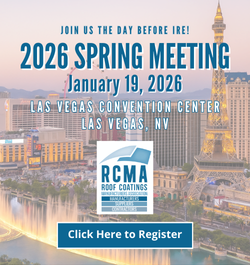
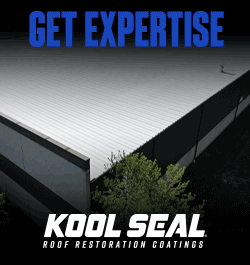

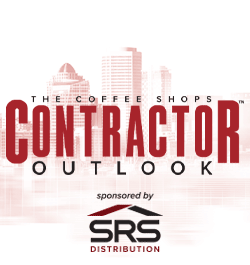



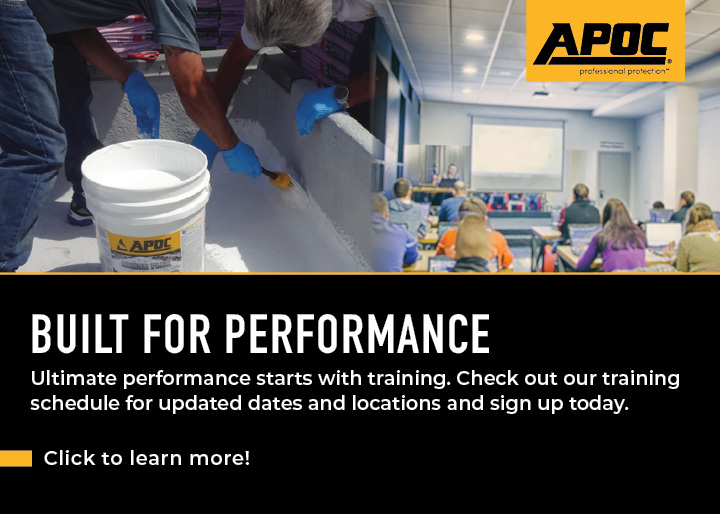


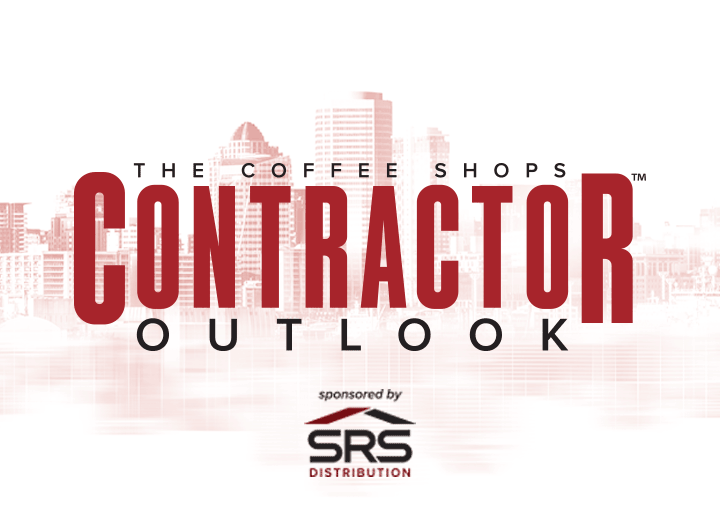

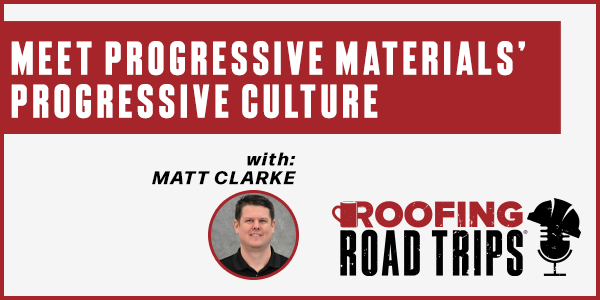








Comments
Leave a Reply
Have an account? Login to leave a comment!
Sign In